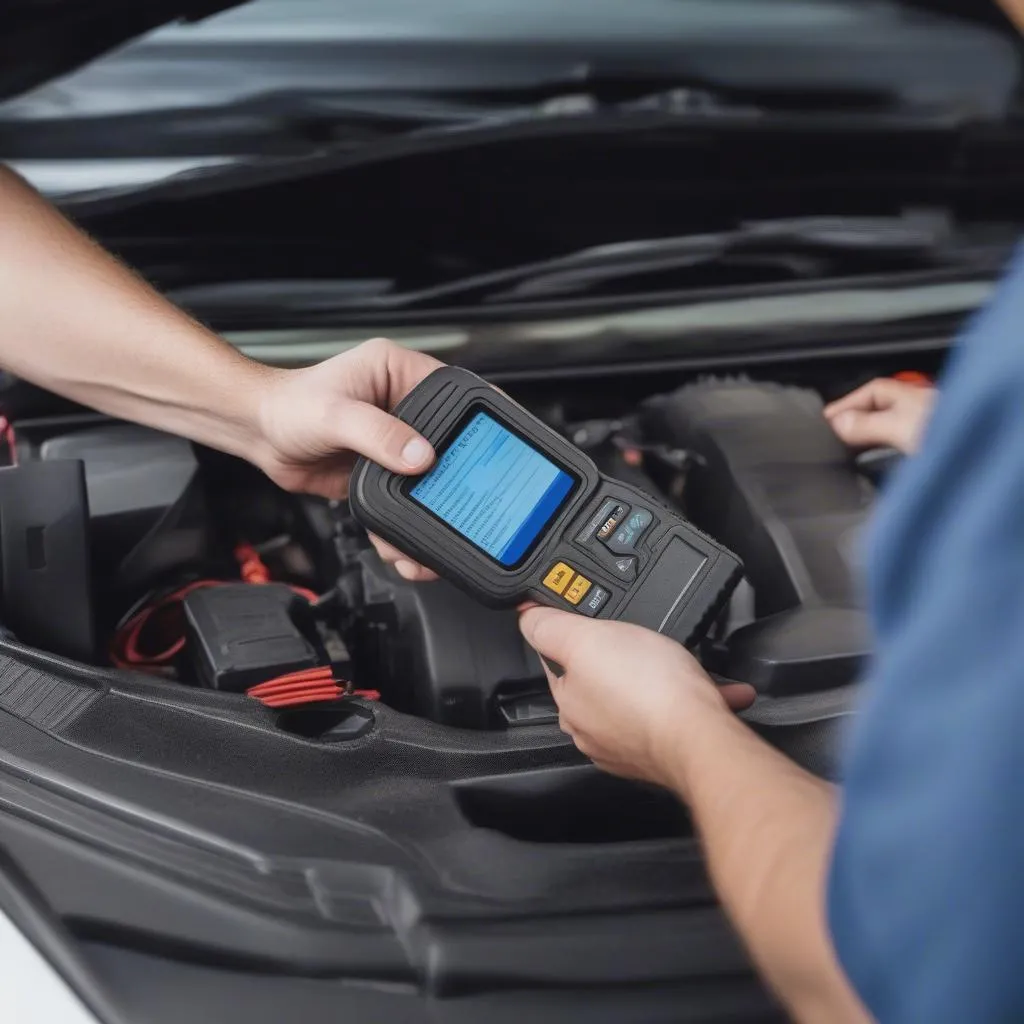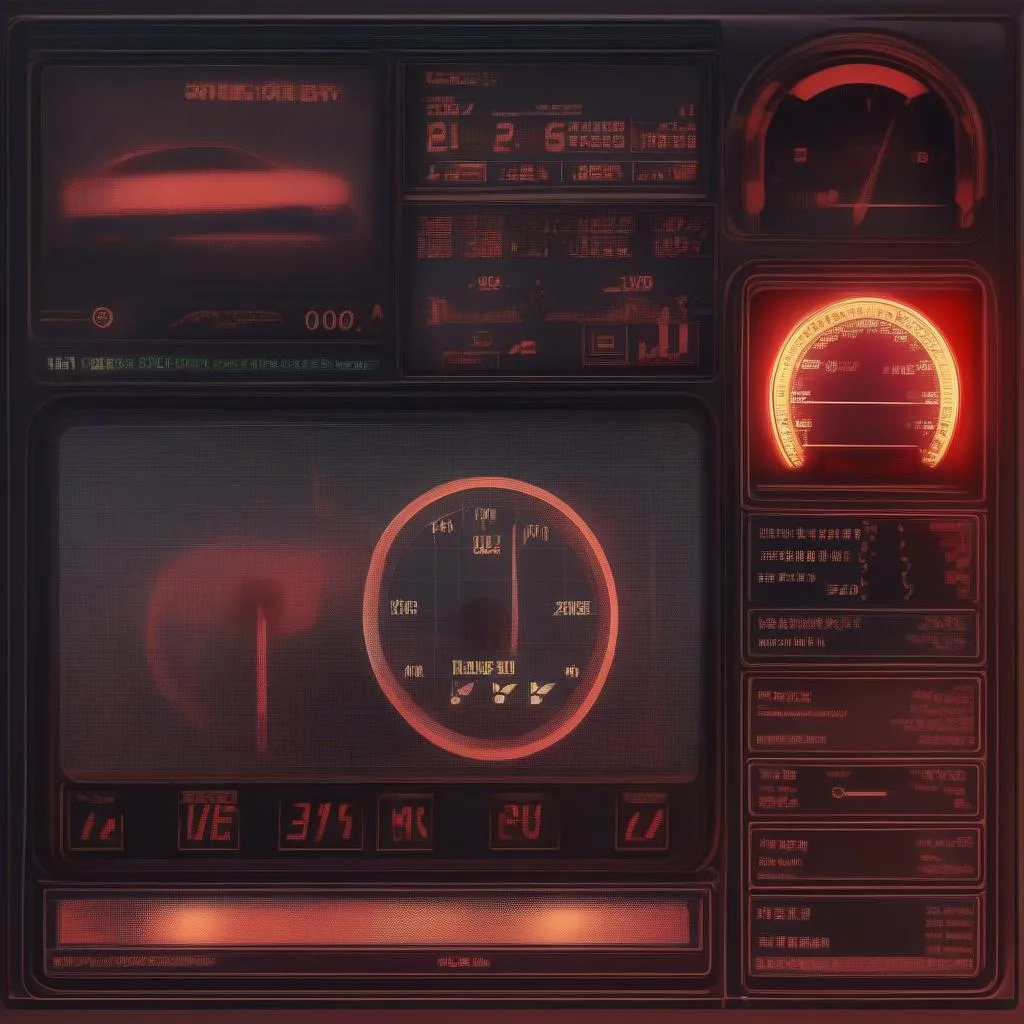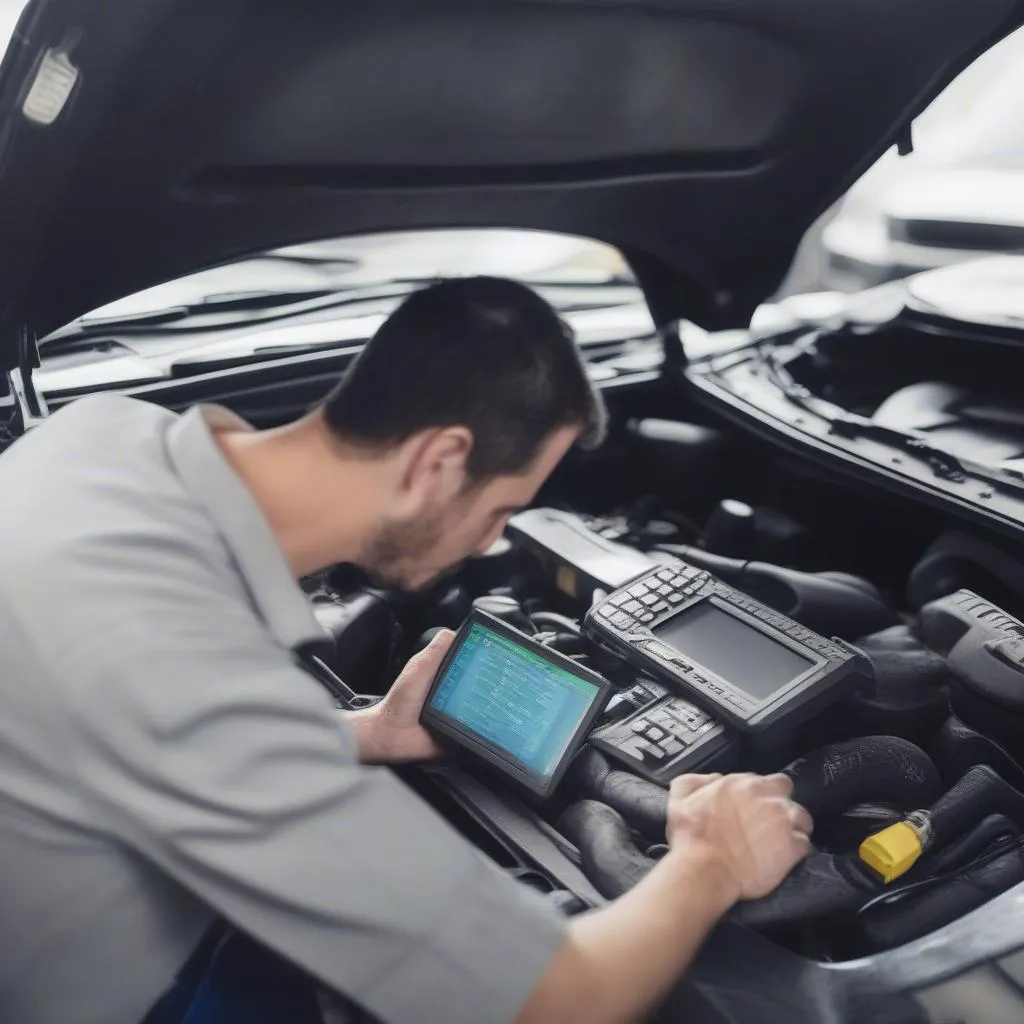Have you ever been driving down the road when your car’s Check Engine Light (CEL) suddenly illuminates? It’s a stressful experience, leaving you wondering what’s wrong with your vehicle and how much it will cost to fix. Fortunately, you don’t need to be a mechanic to diagnose the problem yourself. With an OBD II code reader, you can quickly get a glimpse into your car’s health and potentially save yourself a trip (and money) at the auto shop.
What is an OBD II Code Reader and Why Do I Need It?
An OBD II code reader is a handy diagnostic tool that plugs into your car’s OBD II port (located under the dashboard, usually near the steering wheel) to retrieve trouble codes. These codes are essentially messages from your car’s computer, providing valuable insights into potential issues.
Think of it like a doctor using an X-ray to diagnose a broken bone. The code reader acts as a translator, transforming complex electronic signals into readable information that you can understand. It’s like a translator between you and your car’s computer. This information can help you pinpoint the source of the problem, saving you time and money by avoiding unnecessary repairs.
How to Use an OBD II Code Reader: A Step-by-Step Guide
Using an OBD II code reader is surprisingly easy, even if you’re not a tech whiz. Here’s a simple step-by-step guide:
1. Find the OBD II Port:
Locate the OBD II port on your car. It’s usually a 16-pin connector located under the dashboard, typically near the steering column.
2. Plug in the Code Reader:
Plug the OBD II code reader into the port. Make sure it’s securely connected. The reader should automatically power up and start scanning for diagnostic codes.
3. Choose a Language:
Most code readers have a language option. Choose the language you prefer, whether it be English, Spanish, French, or another language.
4. Read the Diagnostic Codes:
The code reader will display a list of diagnostic codes. These codes are usually a combination of letters and numbers, like “P0300” or “C1234”. Don’t worry, you don’t need to memorize them! Most code readers include a built-in code dictionary to help you understand the meaning of each code.
5. Interpret the Codes:
The code reader will translate the codes into plain language. For example, “P0300” might indicate a random misfire in one or more cylinders. This information can help you identify the potential source of the problem.
6. Clear the Codes (Optional):
Once you’ve addressed the issue, you can clear the codes from the car’s computer. This will reset the Check Engine Light. However, it’s important to remember that clearing the codes won’t actually fix the problem. If the problem persists, the light will likely come back on.
FAQs About Using an OBD II Code Reader
Q: Can I use an OBD II code reader on any car?
A: Most OBD II code readers are compatible with vehicles manufactured in the United States after 1996 and European cars manufactured after 2000.
Q: Do I need a specific code reader for my car?
A: There are different types of OBD II code readers, some more advanced than others. For basic diagnostics, a standard code reader will suffice. However, if you need more detailed information or want to perform advanced functions, you may need a more specialized reader.
Q: What should I do if I get a diagnostic code?
A: If you receive a code, it’s best to consult a mechanic or a trusted source like a repair manual or online database. They can help you interpret the code and understand the potential issues.
Q: Can I fix the problem myself after using an OBD II code reader?
A: While you can use the code reader to identify the potential problem, it’s best to consult a qualified mechanic for complex repairs. Some repairs can be dangerous if not done correctly.
Q: Does using an OBD II code reader void my car’s warranty?
A: Using a code reader won’t void your car’s warranty. However, clearing the codes may erase important information that a mechanic needs to diagnose the problem. It’s best to consult your car’s owner’s manual or your dealership for specific guidance.
Conclusion
An OBD II code reader is a powerful tool that can help you stay on top of your car’s health and diagnose problems before they become major issues. It’s a must-have for any DIY car enthusiast or anyone looking to save money on car repairs. With a little bit of knowledge and a code reader in hand, you can confidently troubleshoot your vehicle and keep it running smoothly for years to come.
Have any questions about OBD II code readers? Leave a comment below! And be sure to check out our other articles on how to use different types of code readers for various car models and manufacturers.
 OBD II Code Reader
OBD II Code Reader
 Check Engine Light
Check Engine Light
 Mechanic Using Diagnostics Tool
Mechanic Using Diagnostics Tool
Still need help with your car’s diagnostics? We’re here to help! Contact us via WhatsApp at +84767531508 to get expert support from our team of certified automotive technicians. We’re available 24/7 to answer your questions and provide solutions for all your automotive needs.